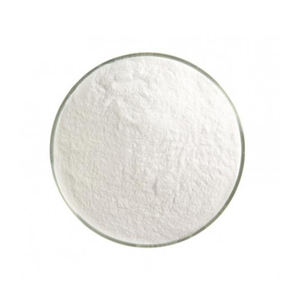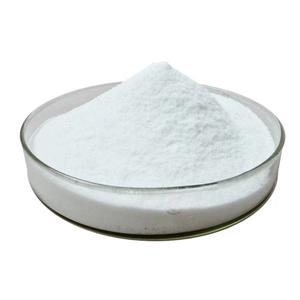In modern building, cement is a basic material that straight impacts the high quality and life expectancy of buildings. Nevertheless, traditional concrete products usually face issues such as splitting due to drying out contraction and temperature level variations. In feedback to this obstacle, concrete crack-resistant ingredients have actually been established. This post will explore their functioning concepts, main functions, and functional applications, offering readers with an extensive understanding of their value.
What Are Cement Crack-Resistant Additives?
(TRUNNANO Cement Crack-Resistant Additives)
Cement crack-resistant additives are chemical products particularly developed to enhance the performance of cement-based products like concrete. When blended with cement, these ingredients substantially decrease the formation and growth of micro-cracks brought on by elements such as drying out shrinking and temperature level changes, thereby substantially enhancing the stamina and security of the end product.
Key Functions and Advantages
1. Decrease Splitting By managing the workability of the concrete paste, it reduces the shrinkage rate; this aids avoid splits in concrete during the curing process because of quick water evaporation.
2. Boost Sturdiness, increasing the versatility and flexible modulus of the product, makes the final product much more robust and sturdy; this means that also when based on exterior forces, the concrete can better withstand damage.
3. Boost Water Resistance Some crack-resistant additives likewise offer exceptional water-repellent residential properties, better enhancing the waterproofing capability of concrete elements; this is especially important for structures like cellars and tunnels that call for great water resistance.
4. Easy to Use These ingredients are very easy to blend with normal cement and do not need additional facility procedures; this not only simplifies the building and construction process yet also boosts building efficiency.
In-depth Operating Principles
Concrete crack-resistant additives accomplish their effects via a number of key devices:
1. Managing Surface area Tension By changing the inter-particle tourist attraction of concrete, it controls the rate of water evaporation, preventing quick drying and the resulting contraction; this aids keep the harmony and stability of the cement paste, reducing interior tension concentration as a result of rapid water loss. For instance, in high-temperature or completely dry atmospheres, the concrete paste would quickly shed dampness, resulting in interior tensile stresses and cracks. Crack-resistant ingredients reduce the dissipation rate, allowing the cement paste to set slowly, thus minimizing the occurrence of fractures.
2. Enhancing Microstructure, They promote the formation of a more portable and steady network of essential substances like C-S-H gel, consequently improving the overall mechanical toughness of the system. C-S-H gel is a major item of the cement hydration procedure, and its thickness and security directly affect the overall efficiency of the concrete. Crack-resistant additives promote the development of C-S-H gel and ensure its even distribution throughout the concrete, therefore boosting the product’s toughness and sturdiness.
3. Presenting Versatile Elements Some kinds of ingredients have long-chain polymers or other versatile parts that act as “bridges” during the curing procedure. Also if local anxiety focus occur, these elements can quickly disperse the pressure, preventing fracture breeding. These adaptable elements can effectively absorb and distribute tension, hence enhancing the strength and split resistance of the concrete. For example, when concrete is subjected to exterior lots or temperature modifications, the flexible aspects can extend and press like springs, easing stress focus and avoiding the development and growth of splits.
Are All Sorts Of Concrete Suitable for Adding Crack-Resistant Ingredients?
Theoretically, most normal Portland concrete can be utilized with crack-resistant additives to achieve the desired effect. Nevertheless, it is important to keep in mind that different types of concrete (such as early-strength and low-heat cement) might call for details solutions to make certain ideal performance. Before full-scale application, it is advisable to accomplish small-scale tests to make sure the compatibility and effectiveness of the ingredients.
1. Ordinary Portland Cement In many cases, general-purpose crack-resistant additives can be made use of; this sort of cement is the most frequently used and has broad applicability. General-purpose crack-resistant additives usually satisfy the fundamental needs of average Portland cement, enhancing its split resistance.
2.Early-Strength Cement It is suggested to choose additives that can respond quickly and give early-strength support. Early-strength concrete needs to achieve a particular level of stamina within a brief period, so the response rate of the additive is important. For instance, some early-strength cements require to reach a certain strength within a few hours, which requires the crack-resistant additive to work promptly.
3.Low-Heat Concrete Think about the thermal stability of the additive to ensure it remains effective under high-temperature problems. Low-heat concrete appropriates for large-volume concrete jobs and needs controlling the warmth of hydration to avoid thermal cracking. In such instances, picking a crack-resistant additive with great thermal security is important to ensure it keeps its efficiency at heats.
( TRUNNANO Cement Crack-Resistant Additives)
Practical Application Examples
Although we will not mention certain jobs, we can highlight the functional results of concrete crack-resistant ingredients via some typical application circumstances:
1.High-Rise Buildings In skyscrapers, raised height brings about greater stress on the concrete as a result of temperature modifications and wind lots. Crack-resistant ingredients can substantially minimize cracks triggered by these factors, improving the security and sturdiness of the structure. For example, in super-high-rise structures, temperature adjustments and wind pressure can trigger significant stress on the concrete framework. Crack-resistant ingredients aid the concrete much better stand up to these tensions, prolonging the building’s lifespan.
2. Bridge Design Bridges typically deal with severe climate condition and traffic lots. Crack-resistant ingredients can enhance the toughness and toughness of the concrete, expanding the life of the bridge. Bridges experience various complex ecological conditions during usage, such as freeze-thaw cycles and salt haze rust. Crack-resistant ingredients can improve the fracture resistance of the concrete, reducing upkeep expenses.
3. Below ground Design In city passages and various other underground facilities, crack-resistant ingredients can offer far better water resistance, avoiding groundwater penetration and securing the framework from corrosion. Underground projects are often in a humid setting, and groundwater seepage is a common problem. Crack-resistant ingredients not just improve the water resistance of the concrete yet also enhance its general stability.
High-quality Cement Crack-Resistant Additives Provider
Cabr-Concrete is a supplier of Concrete Admixture under TRUNNANO with over 12 years of experience in nano-building energy conservation and nanotechnology development. It accepts payment via Credit Card, T/T, West Union and Paypal. TRUNNANO will ship the goods to customers overseas through FedEx, DHL, by air, or by sea. If you are looking for high quality crack resistant concrete mix, please feel free to contact us and send an inquiry(sales5@nanotrun.com).
All articles and pictures are from the Internet. If there are any copyright issues, please contact us in time to delete.
Inquiry us

